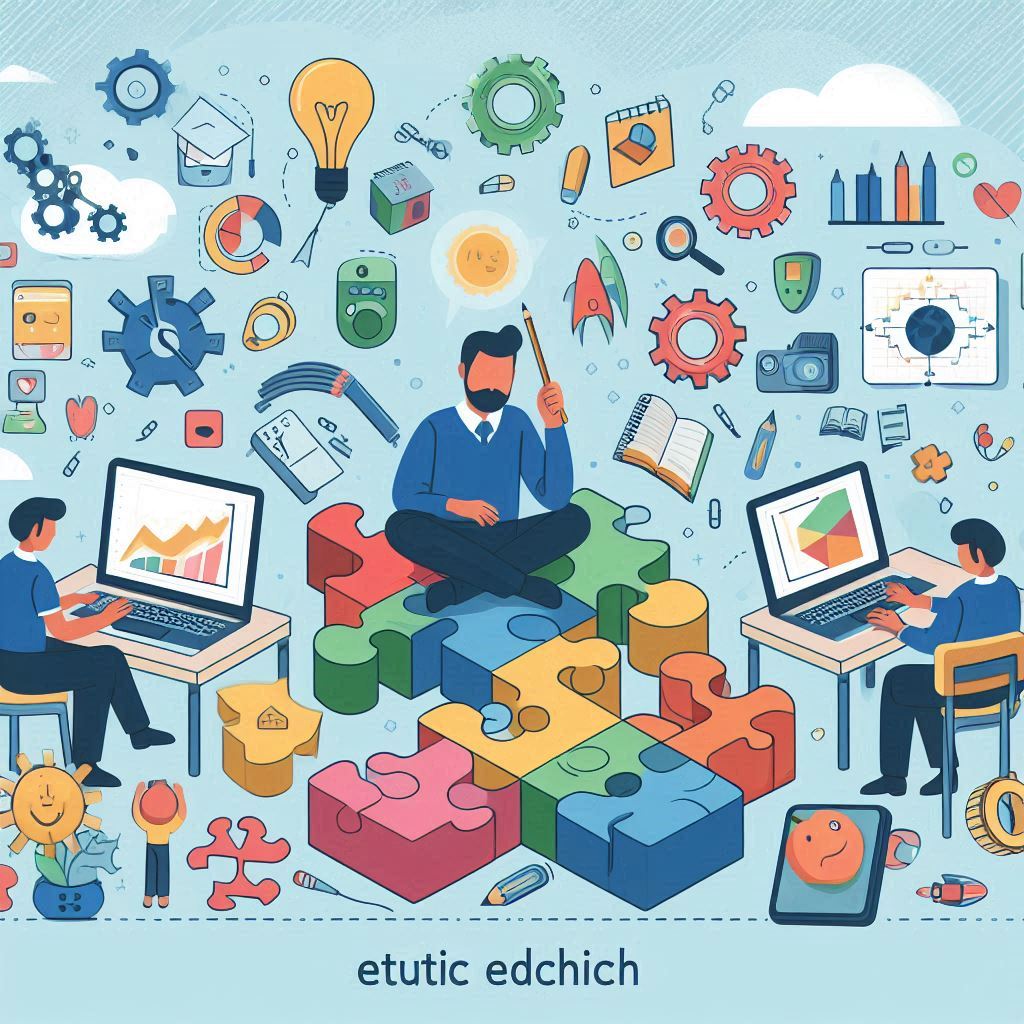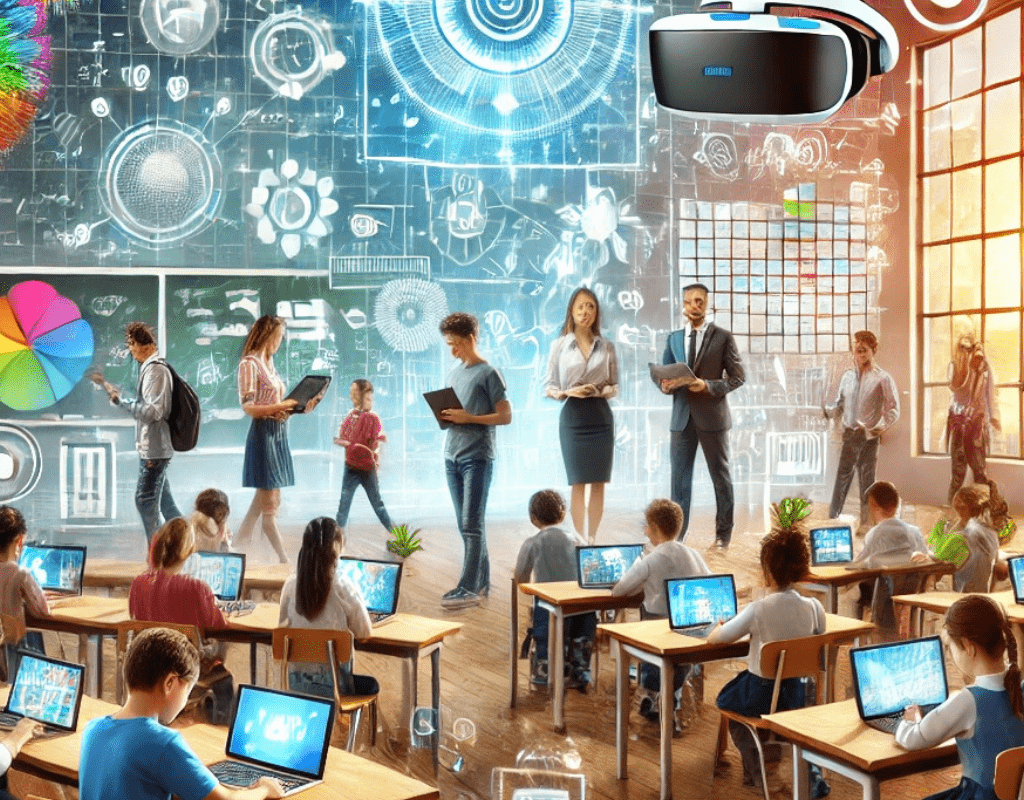Introduction
EdTech for special needs education – EdTech is opening up possibilities for students with special needs like never before and shattering stereotypes in today’s rapidly changing educational landscape. Technology is changing how students with disabilities access education, develop confidence, and realize their full potential, from assistive technologies that facilitate communication to AI-driven platforms that personalize learning. These developments provide whole new opportunities for participation, freedom, and success, rather than just leveling the playing field.
The days when conventional classrooms struggled to meet every student’s diverse needs are long gone. EdTech now provides custom solutions, such as adaptive applications that adjust to fit individual learning speeds, immersive VR settings for sensory integration, and speech-to-text software for non-verbal learners. These instruments encourage participation, help to reduce irritation, and recognize every student’s unique abilities, ensuring that none is left behind in the pursuit of knowledge.
But the influence transcends academics. EdTech supports peer collaboration, social-emotional development, and data-driven insights to help teachers refine their instructional support. The future of special needs education shines even brighter as we enter this transformative age. These seven amazing ways EdTech is redefining the rules demonstrate how any student can flourish with the right tools.
Join us as we explore how technology is creating a more inclusive, fair, and empowered future.
1. Realising the Different Requirements of Special Education
Special needs education encompasses a broad spectrum of learning variations, including developmental, emotional, physical, and cognitive difficulties. To reach academic achievement and social-emotional development, students with disabilities, including autism spectrum disorder, ADHD, dyslexia, and sensory challenges, typically need individualized learning strategies. Though successful for many, traditional teaching strategies may not be sufficient for the varied and active needs of these students. Here is where educational technology EdTech for special needs education enhances customized learning opportunities rather than replacing teacher-led teaching or human connection.
EdTech for special needs is about accessibility, inclusivity, and empowerment, not just flashy tools or software. For students who have traditionally been underprivileged or misunderstood, it creates a universe of opportunities with careful integration.
2. EdTech for Special Needs Education – Adaptive Technologies Personalised Learning
EdTech in special needs education shows great promise in one area: personalized and adaptable learning environments. EdTech systems may evaluate a student’s preferred modalities, skill level, and learning speed, then modify material, unlike one-size-fits-all lesson plans.
Apps like DreamBox Learning or Khan Academy Kids, for example, change in real-time to match student responses to questions or material interaction. These sites allow kids to advance at their own pace, free from the need to keep up with friends or avoid unnecessary delay.
By acknowledging their unique talents and difficulties, this form of personalization helps students to empower themselves. Essential elements for long-term learning success include assisting people to stay engaged, reducing anxiety, and fostering responsibility in their educational process.
3. Improving Assisted Technologies-Based Communication
For many children with speech or language difficulties, one of the most significant obstacles to learning can be effective communication. Effective bridging of such a gap is provided by EdTech for Special Needs Education solutions, such as augmentative and alternative communication (AAC). Customizable symbols, images, and text-to-speech capabilities of tools like Proloquo2Go, TouchChat HD, and Avaz enable nonverbal or marginally vocal individuals to communicate effectively.
For children who struggle with writing or fine motor skills, speech-to-text tools and voice recognition software can provide assistance, allowing them to engage more fully in classroom activities. These instruments support self-advocacy and social inclusion, thereby strengthening a closer sense of belonging among peers, not just through communication.

4. Designing inclusive classrooms with VR and AR
Particularly in producing inclusive learning opportunities, Virtual Reality (VR) and Augmented Reality (AR) have become transforming agents in EdTech. Students with sensory processing problems, ADHD, or autism may find the immersive technology’s multimodal involvement beneficial.
Students may investigate settings such as historical sites, aquatic habitats, or even outer space on VR platforms like ClassVR that would otherwise be inaccessible. This practical, experiential learning style may enhance concentration, pique interest, and enable pupils to grasp abstract ideas more effectively.
AR applications may overlay digital data over the actual environment, therefore enhancing interactive learning. Apps like Quiver or Merge EDU, for instance, bring worksheets and scientific experiments to life, thereby accommodating various learning environments and enabling students to retain material more effectively.
5. Advancing Emotional and Behavioural Growth
Consistent reinforcement and well-organized surroundings help students with special needs, mainly. Through immediate feedback, reinforcement of good behavior, and ongoing monitoring, EdTech solutions can support behavioral and emotional development.
Using customizable avatars and point systems, sites like ClassDojo let parents and instructors track and inspire student behavior. Likewise, GoNoodle and Breathe, Think, Do with Sesame include mindfulness and emotional regulation activities designed to help children identify and manage their emotions.
Students with autism or emotional problems who may struggle with social conventions and self-regulation will especially find these resources very helpful. EdTech promotes emotional resilience in addition to intellectual development by integrating emotional learning into everyday activities.
6. Closely Linking School to Home
The communication gap between homes and institutions is a persistent challenge in special education. A child’s education involves parents as major stakeholders. Hence, EdTech provides easy tools to ensure they stay informed and engaged.
Apps like Seesaw, Remind, and ClassTag enable instructors to instantly communicate with families, track student progress, share classroom updates, and even send multimedia messages. This ongoing line of communication ensures that classroom techniques can be reinforced at home, fosters trust, and helps coordinate activities.
Furthermore, websites that include Individualized Education Programs (IEPS) and progress data online simplify administrative tasks and provide quick access to crucial records for parents, therapists, and teachers. This generates a relatively cohesive support network for the learner.
7. Educator Training and Enhanced Accessibility
The quality of teacher training in using EdTech in special needs schooling also determines its efficacy. Fortunately, many contemporary systems have certification courses, training modules, and instructor dashboards. These provide teachers with the means and confidence required to customize their lessons to different students.
Beyond instruction, EdTech significantly enhances universal learning design (UDL) by increasing accessibility across the board. Many learning systems now default with features like text-to-speech, captioning, high-contrast modes, and customizable fonts. Students with disabilities, as well as those with temporary difficulties, language barriers, or diverse learning styles, benefit from this.
The focus on accessibility is making inclusive education a standard, rather than an exception, and that represents a radical shift in the education landscape.
Conclusion: EdTech’s Future Bright in Special Needs Education
Although in the field of special needs education, it is proving to be nothing less than revolutionary, the intersection of technology and education has always held promise. From customized learning routes to strong communication tools and immersive classroom experiences, EdTech is transforming how we educate and how all students, regardless of ability, can learn and flourish.
Policymakers, educators, and technology developers must continue to prioritize inclusivity, accessibility, and ongoing support. EdTech will not only close the learning gap for pupils with special needs but also amplify their potential through careful implementation and a human-centered approach, thereby fostering better futures for the subsequent generation.




